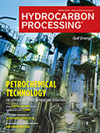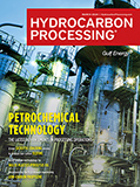Hydrogen
TA’ZIZ progresses with low-carbon ammonia shareholder agreement
The facility will reinforce Abu Dhabi’s position as a leader in low-carbon fuels and capitalize on the growing demand for low-carbon ammonia as a carrier fuel for clean hydrogen.
Germany's energy crisis powers hydrogen switch
From the moment Russian gas exports to Germany were first disrupted in June, German firm Kelheim Fibers began casting around for alternative options to keep its engines running.
ADNOC accelerates delivery of low carbon growth strategy to continue responsibly meeting global energy needs
ADNOC is accelerating operationalization of its board mandated low carbon growth strategy, by establishing a new Low Carbon Solutions and International Growth vertical that will focus on renewable energy, clean hydrogen and carbon capture and storage.
The heavy toll on sulfur blocks
The tightening of environmental norms and emissions specifications provides additional challenges to refining.
Decarbonizing your fired heaters with hydrogen fuel
Hydrogen has long been considered a high-value product, but not typically as a fuel for fired equipment.
Sasol, ArcelorMittal to jointly explore green hydrogen, carbon capture projects
South African petrochemicals company Sasol said it was partnering steelmaker ArcelorMittal South Africa to explore carbon capture technology and steel production using green hydrogen.
2022 HP Awards Finalists
<em>Hydrocarbon Processing</em>, the downstream processing sector’s leading technical publication for 100 yr, has announced the finalists for its sixth annual <em>HP</em> Awards, which celebrate innovative technologies and people that have been instrumental in improving facility operations over the past year.
Rolls-Royce CEO says aviation needs to act on net zero pledges
Aviation needs to accelerate the use of biofuels before new technologies like hydrogen and electric-powered aircraft become viable to limit emissions as demand for travel will not abate.
Danish Power-to-X partnership breaks ground on first of its kind green ammonia project
The partners officially started construction of the demonstration plant in Lemvig, Denmark, that will produce green ammonia based on renewable power and electrolysis of water.
Japan firms eye ammonia, methanol projects in Canada, Alberta minister says
Japanese companies are looking to invest in the Canadian province of Alberta to produce ammonia and methanol in the effort to build global supply chains of greener energy to fight climate change, a provincial minister said.

- Renewable fuels project in Canada begins production 4/19
- Jet fuel demand growth lags as air traffic exceeds pre-pandemic level 4/19
- Jet2.com to use SAF at London Stansted Airport 4/19
- Neste and New Jersey Natural Gas target reducing greenhouse gas emissions with Neste MY Renewable Diesel 4/19
- Cepsa and Evos join up for green methanol storage in Spain and the Netherlands 4/19
- Russia's Bashneft oil company installs anti-drone nets to protect refineries 4/19




